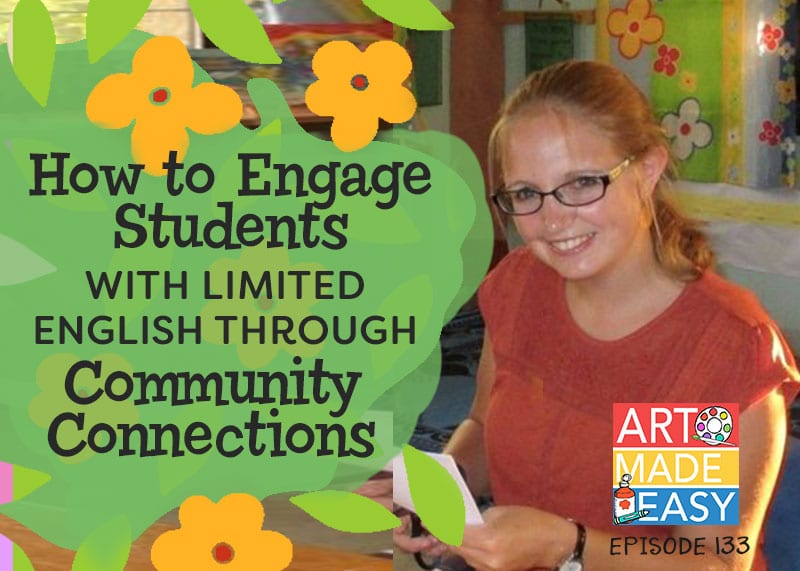Do you have students who speak limited English? Teaching art in a community with language barriers is a ripe opportunity for engagement and connection.
You might just need to approach teaching differently.
Today’s guest, classroom teacher Hannah Coggins, teaches 1st and 2nd grade in Africa. She shares her strategies for engaging and slowing children down long enough to reflect on their art so they can truly be the best version of themselves.
Hannah is a member of The Sparkler’s Club and was featured as our spotlight teacher for May. Like all Spotlight guests, Hannah turns the interview around and asks Patty a couple of questions.
Patty shares her experience teaching art to children whose English skills were very limited and how this strategy is equally effective when you have laryngitis. And why both Hannah and Patty recommend trying it!
Behavior management and student engagement usually go well together.– Hannah Coggins
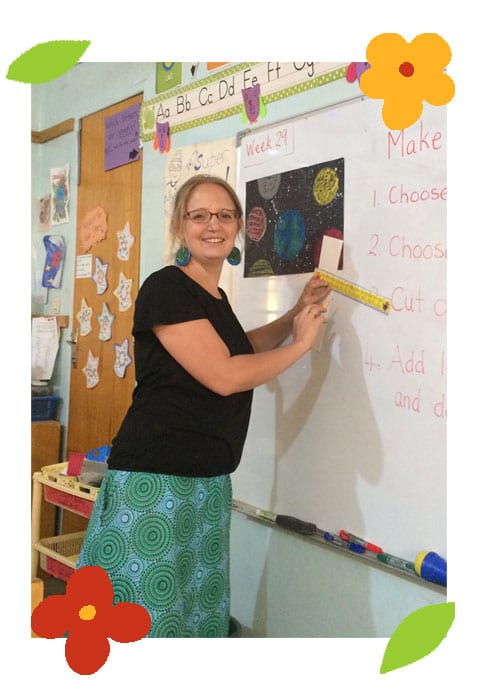
WHAT YOU’LL LEARN:
– What motivates Hannah to teach art as a classroom teacher
– How to address a child who wants to go down a different path from the lesson assigned
– The biggest challenges Hannah has faced in the art room (this one will definitely resonate with you!)
– Tips for teaching art to students whose first language isn’t English
– Why it’s so important to incorporate a students’ culture into the lesson
LISTEN TO THE SHOW
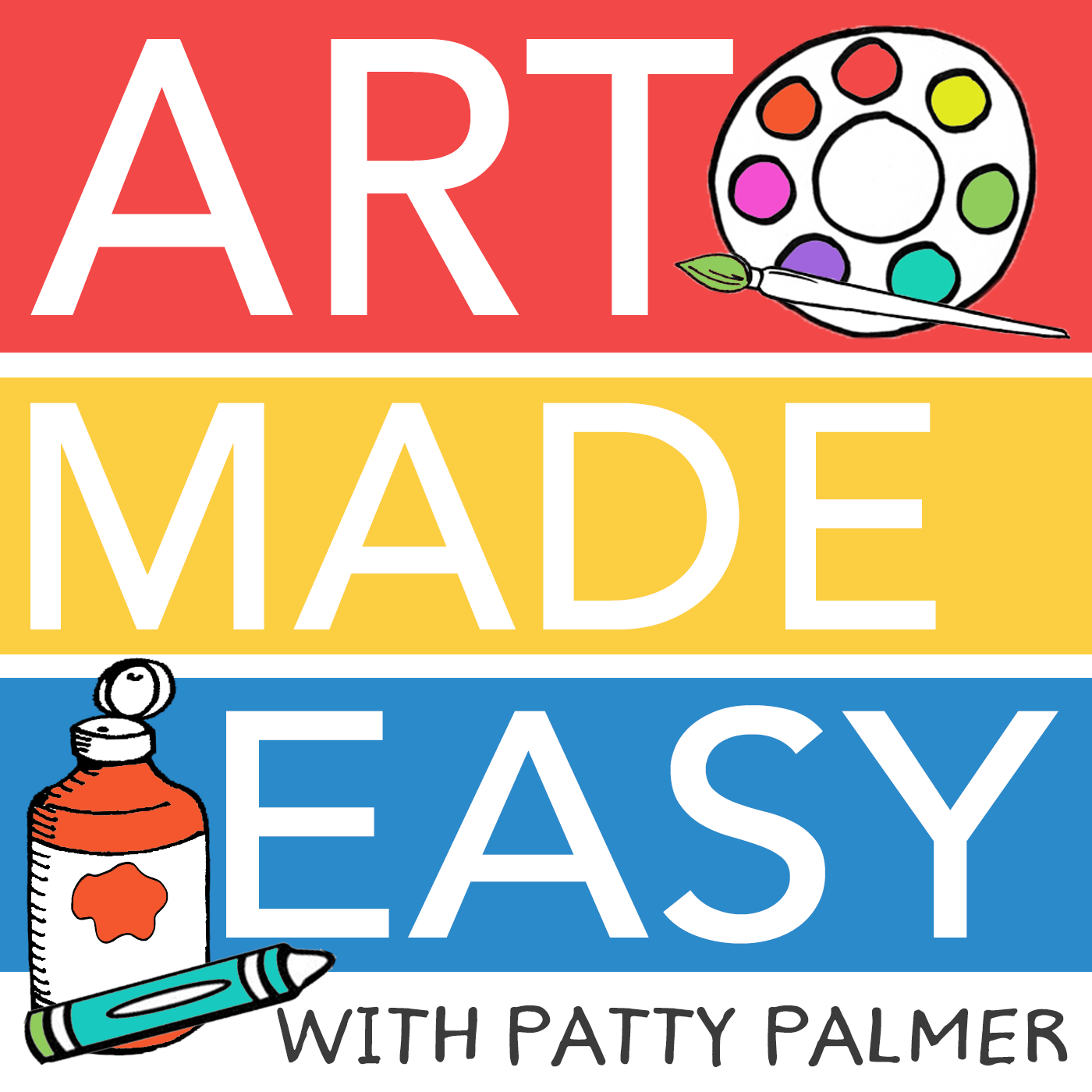
My best advice for teaching art to kids.
Do you have students who speak limited English? Teaching art in a community with language barriers is a ripe opportunity for engagement and connection.
You might just need to approach teaching differently.
Today’s guest, classroom teacher Hannah Coggins, teaches 1st and 2nd grade in Africa. She shares her strategies for engaging and slowing children down long enough to reflect on their art so they can truly be the best version of themselves.
Hannah is a member of The Sparkler’s Club and was featured as our spotlight teacher for May. Like all Spotlight guests, Hannah turns the interview around and asks Patty a couple of questions.
Patty shares her experience teaching art to children whose English skills were very limited and how this strategy is equally effective when you have laryngitis. And why both Hannah and Patty recommend trying it!
Behavior management and student engagement usually go well together.– Hannah Coggins
WHAT YOU’LL LEARN:
– What motivates Hannah to teach art as a classroom teacher
– How to address a child who wants to go down a different path from the lesson assigned
– The biggest challenges Hannah has faced in the art room (this one will definitely resonate with you!)
– Tips for teaching art to students whose first language isn’t English
– Why it’s so important to incorporate a students’ culture into the lesson
LISTEN TO THE SHOW
Here is Hannah’s interview in our SPARKLE magazine.
1. What was your path/journey to becoming an art teacher.
I trained to be an elementary teacher at university in the UK. This training included art, along with core subjects and other “specials”. I’ve been teaching for 12 years and have always been able to include art in my weekly schedule.
I wanted to study a degree which was varied, with lots of practical application. Teaching was a good option.
In more recent years, I have taught overseas in a number of African Countries. This has enabled me to have more flexibility and ownership over the curriculum I use. Art has always stayed a key part of my schedule, both in weekly dedicated art time, as well as incorporating it into other curriculum subjects.
2. What do you feel is your best attribute or strength as an art teacher?
I’ve been able to instill a strong sense of confidence in my students, allowing them to experiment and try new things without feeling like they can get it “wrong”. Across my teaching, I encourage children to take risks and challenge themselves.
We have a strong community within our class of support and encouragement, which also supports high standards of behavior and participation.
3. Do you have a specific classroom management strategy?
I believe strong teacher-student relationships underpin everything else. I endeavor to be a cheerleader for each of my students throughout their studies. Behavior management and student engagement usually go well together. Partly because I teach one class all the time, I am able to hone these areas.
I have clear expectations and boundaries which I think is beneficial for the students. They know how to ask question in a respectful way, and that I am open to hearing their ideas on additions or changes to a particular project.
I have a fairly high-energy teaching style, but I try to pare this back during art. I try to create a slightly serious tone in order to allow the kids to focus on craftsmanship and high quality outcome. We still chat and laugh of course, but they tend to appreciate that focussed style so they can really invest in their work. This is very similar to how we approach longer writing projects, which also require quiet focus for maximum creativity and accuracy.
4. Why do you feel teaching art to kids is important?
Within the classroom setting, I probably do about 50% art techniques/skills and 50% curriculum related projects to apply the skills. I love the fact that art can enhance the curriculum and …



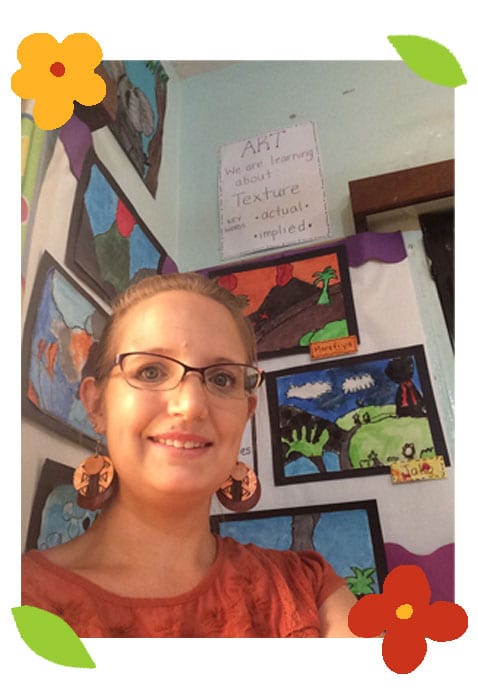
Here is Hannah’s interview in our SPARKLE magazine.
1. What was your path/journey to becoming an art teacher.
I trained to be an elementary teacher at university in the UK. This training included art, along with core subjects and other “specials”. I’ve been teaching for 12 years and have always been able to include art in my weekly schedule.
I wanted to study a degree which was varied, with lots of practical application. Teaching was a good option.
In more recent years, I have taught overseas in a number of African Countries. This has enabled me to have more flexibility and ownership over the curriculum I use. Art has always stayed a key part of my schedule, both in weekly dedicated art time, as well as incorporating it into other curriculum subjects.
2. What do you feel is your best attribute or strength as an art teacher?
I’ve been able to instill a strong sense of confidence in my students, allowing them to experiment and try new things without feeling like they can get it “wrong”. Across my teaching, I encourage children to take risks and challenge themselves.
We have a strong community within our class of support and encouragement, which also supports high standards of behavior and participation.
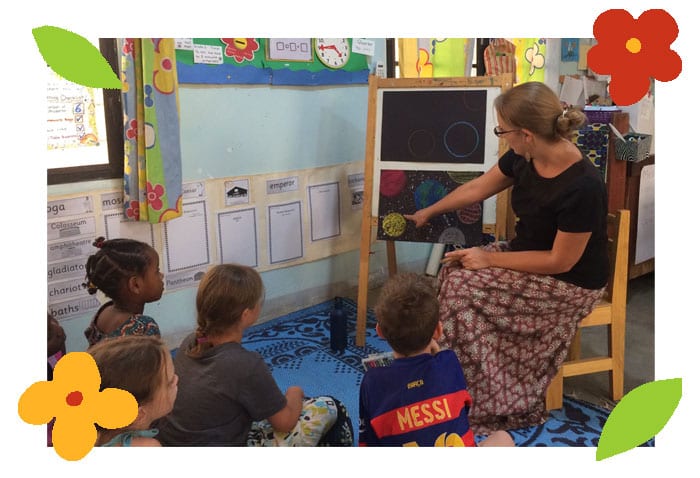
3. Do you have a specific classroom management strategy?
I believe strong teacher-student relationships underpin everything else. I endeavor to be a cheerleader for each of my students throughout their studies. Behavior management and student engagement usually go well together. Partly because I teach one class all the time, I am able to hone these areas.
I have clear expectations and boundaries which I think is beneficial for the students. They know how to ask question in a respectful way, and that I am open to hearing their ideas on additions or changes to a particular project.
I have a fairly high-energy teaching style, but I try to pare this back during art. I try to create a slightly serious tone in order to allow the kids to focus on craftsmanship and high quality outcome. We still chat and laugh of course, but they tend to appreciate that focussed style so they can really invest in their work. This is very similar to how we approach longer writing projects, which also require quiet focus for maximum creativity and accuracy.
4. Why do you feel teaching art to kids is important?
Within the classroom setting, I probably do about 50% art techniques/skills and 50% curriculum related projects to apply the skills. I love the fact that art can enhance the curriculum and gives students another avenue to express themselves and be creative. It is important to allow self expression and creativity across the curriculum, so having a strong art program to teach and explore the techniques and mediums, is crucial.
I have found that art provides a great avenue for kids to start conversations about how they are feeling, and what’s going on, on the inside. This has been especially true since I have worked in small international schools, where the kids live fairly cross cultural, transitional lives.
5. Why did you join the Sparklers Club and how has the joining the group helped you?
I decided to become a Sparkler for professional development (to increase my skills as an art teacher).
I see myself as being a pretty creative person and have always seen the benefit art has upon student learning and development. However, I have had limited training and am not particularly strong in certain techniques (drawing for example!). Being a Sparkler has boosted my confidence in knowing an order to teach different concepts, how to break things down, and linking different curriculum subjects with art skills, as supposed to just drawing a picture that matched a topic.
I love the Facebook group and seeing all the great projects people are doing. It also helps me keep track of new lessons and content in the Sparklers Club.
I think the lessons are excellent and very well put together. The students love them, which is obviously important! I like the way many “staples” are used — black pastel, guided drawing, paint techniques — which helps students build on skills and follow along. But at the same time, there is also a wide variety to choose from and always lots of ways to adjust lessons to fit our needs.
Hannah’s student’s art…
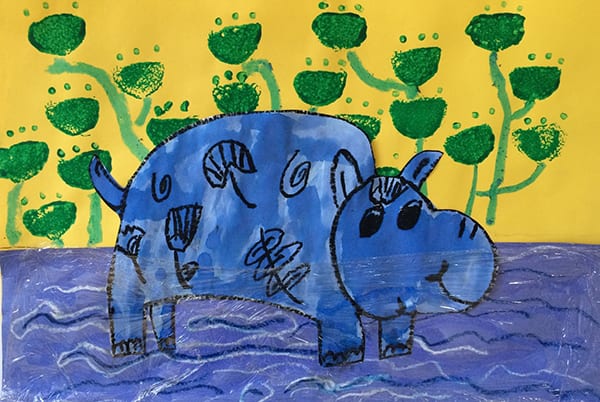
Little Blue Hippo – Egyptian Art Bundle (1st grade)
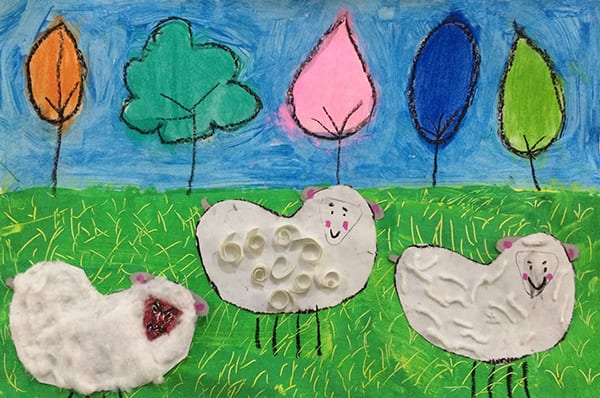
Textured Sheep – Fiber Arts Bundle The Sparklers Club
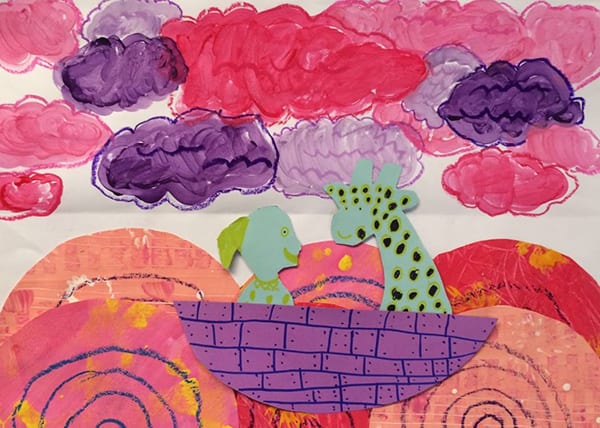
The Yellow Kayak Collage – Polynesian Bundle The Sparklers Club
LINKS & RESOURCES:
Rita Pierson’s Ted Talk: Every Kid Needs a Champion
You can visit Patty through Deep Space Sparkle on Facebook and Instagram
Patty Palmer At Home Instagram
Join the Sparklers Club waitlist HERE
support@deepspacesparkle.com

My best advice for teaching art to kids.
Yes, the day has come!
After a long time deciding if, I finally said when.
Thank you SO much for your encouragement, show suggestions and help getting Art Made Easy off the ground.
Many of you were so pumped about this show but confessed that you had no idea what a podcast was. I love you guys for your unbridled enthusiasm.
Here’s a quick definition of a podcast & what to expect from Art Made Easy:
A podcast is a free radio show. The host (me!) interviews guests or talks about a favorite subject. You get to listen through your computer, laptop or smart phone. I like to listen to my favorite podcasts in my car during long travel days or on my walks via set of ear buds and my iPhone.
You can subscribe to the show via iTunes and Stitcher radio. The benefit is that your free podcast ap on your iPhone will automatically be updated with all the podcast episodes from any show you subscribe to.
Go ahead and give it a try!
To listen on your laptop or computer, just click the play button in the colored box below.
To listen via iTunes, click on the “play in iTunes” banner and click subscribe.
And now onto the show…
For my first show, I wanted to tell you my story of how I became an art teacher. We all have different paths and this one is mine. I’ll share advice to those who are just starting out as an art teacher and some of my best tips for teaching art to kids.
This episode is for anyone who thinks they may not have the qualifications to be an art teacher. Teaching art to kids doesn’t have to happen inside a classroom. You can teach art at home, at a summer camp and even as a volunteer (like I did).
If you are an art teacher just beginning your journey, I’m sharing my best advice to get you through that tough first year. Download my free handout and keep it in your teacher planner and refer to it when you have a tough day.
LISTEN TO THE SHOW
SHOW NOTES:
Drawing With Children: A Creative Method for Adult Beginners, Too
Art Lab for Kids: 52 Creative Adventures in Drawing, Painting, Printmaking, Paper, and Mixed Media-For Budding Artists of All Ages (Lab Series)
National Art Convention
CreativeLive- free online classes
Art Teachers Facebook Group
Website: Painted Paper in the Art Room (Laura Lohmann)
Website: Art of Education
Book: Classroom Management for Art, Music, and PE Teachers
PS – Please leave a review on iTunes!
Art Made Easy is now live on iTunes! Subscribing to the show and leaving an honest review really helps the show gain visibility and allows me to tailor the show to your needs.


